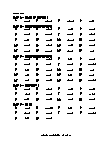Adding and Subtracting Complex Numbers Worksheets
How to Add and Subtract Complex Numbers - Complex numbers are typically comprised of two components. One component is known as the real part, while the other is known as the imaginary part. The standard form of the complex number is written as 'a +bi' were 'a' is the real part, and the 'bi' is the imaginary part. An example of the complex number would be '4+5i', where 4 represents the real part, and the 5i represents the imaginary part. Real numbers with no imaginary component can also be represented and written as 3 + 0i. Also, an imaginary component with no real number can be represented and written as 0 + 6i. For performing addition and subtraction on complex numbers, we will add the real parts together and the imaginary parts together. Let us say we have an equation like: (6+2i) + (4+3i) = (6+4) + (2i+3i) | 10 + 5i. Similarly, we can also perform multiplication on complex numbers. The tip here is to solve the problem by FOIL rule that stands for first, outer, inner, and last. While multiplying complex numbers for multiplying binomials, we have to remember the role of 'i'. 'i' is the square root of the negative 1. i2 equals to -1.
-
Basic Lesson
Guides students solving equations that involve an Adding & Subtracting Complex Numbers. Demonstrates answer checking.
View worksheet -
Independent Practice 1
A really great activity for allowing students to understand the concept of Adding & Subtracting Complex Numbers.
View worksheet -
Independent Practice 2
Students find the Adding & Subtracting Complex Numbers in assorted problems. The answers can be found below.
View worksheet -
Homework Worksheet
Students are provided with problems to achieve the concepts of Adding & Subtracting Complex Numbers.
View worksheet -
Skill Quiz
This tests the students ability to evaluate Adding & Subtracting Complex Numbers.
View worksheet
Sin or Sinus?
When you write sin (45), you are really writing the sinus of 45 degrees! So, the next time your trigonometry teacher tells the class to open their math books, feel free to blurt out, 'It's time to study our sinuses now.' That should be good for a laugh!






